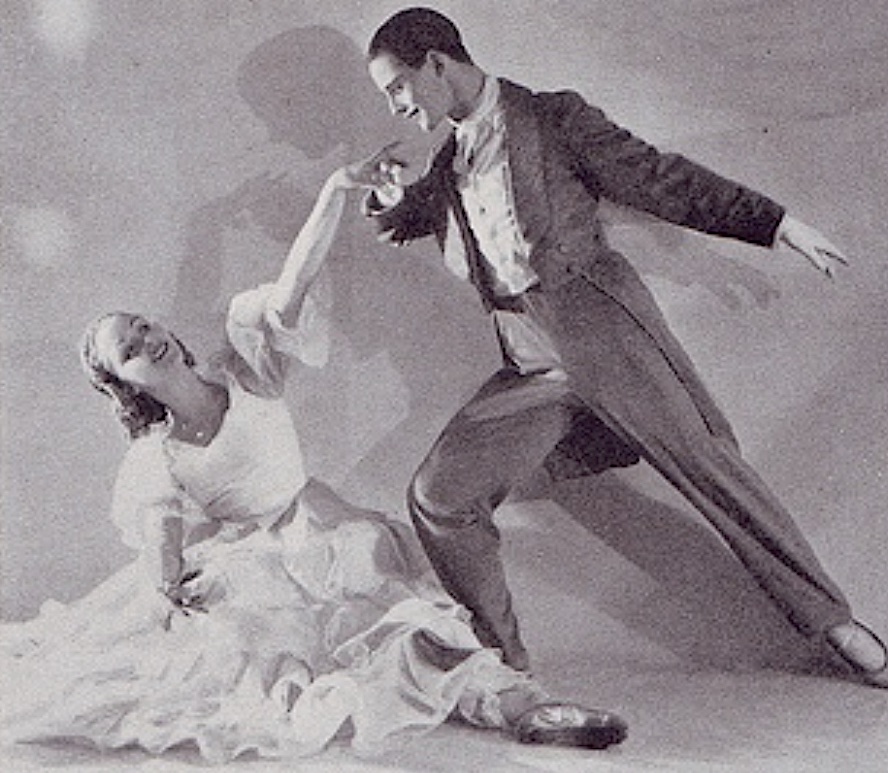OTD in early British television: 5 June 1938

John Wyver writes: Television’s main event on the evening of 5 June 1938 was a presentation of two modern dance works by the company Ballets Jooss. Founded in 1933 by choreographer Kurt Jooss, the group had fled Nazi Germany and been given a home in England at Dartington Hall. Touring extensively through the 1930s and during the war, Ballets Jooss was celebrated for a modernist combination of classical ballet and expressionist-inflected theatre.
The broadcast on 5 June was the company’s second Alexandra Palace appearance, the first having been on the afternoon of Tuesday 24 May, when the comic ballet The Seven Heroes was given. For the second transmission, the programme was, first, The Big City and then A Ball in Old Vienna, a light-hearted work made by Jooss in 1932. This was danced for the cameras by a cast led by Noelle de Mosa as the debutante and Hans Zuellig as her admirer (above), while the same pair also led the company for The Big City.
Kurt Jooss’ most celebrated dance work was, as it remains, the anti-war parable The Green Table, created just before he left Germany in 1932 to music by his frequent collaborator Fritz Cohen and with designs by Hein Heckroth. The only work by him that is regularly given by major companies today, this is a large-scale piece that was perhaps felt to be too expansive to fit into one of the AP studios. Or it may be that its explicit political stance was too forthright for television then.
Both The Big City and A Ball in Old Vienna also come from 1932, and for the latter Cohen arranged music by Austrian dance music composer Joseph Lanner. The score for the former was by Alexander Tansman. Hein Heckroth, who would later be celebrated for his work with the Michael Powell and Emeric Pressburger on The Red Shoes and other masterpieces, created the designs for The Big City, which was seen as a critique of urban modernity. The more traditional costumes for A Ball in Old Vienna were by Aino Simola.
Frustratingly, the two broadcasts appear not to have attracted a single review, but many years later dance historian Janet Rowson Davis speculated that ‘the Jooss style, with its simple lines and strong dramatic content, was admirable for television.’ As can perhaps be judged by a remarkable fragment of mute film archive from Dartington Hall of Ballets Jooss giving a different work, Danse Macabre:
[OTD post no. 170; part of a long-running series leading up to the publication of my book Magic Rays of Light: The Early Years of Television in Britain in January 2026.]
Really good to know there’s a fragment of the Jooss company performing in this video from Dartington. I suspect it’s an in-house exercise, maybe for students, as there’s no Danse Macabre listed among Jooss works for commercial performance. Hoiwever there are quite a lot of photos of The Big City in performance in A V Coton’s wonderful illustrated book, The New Ballet: Kurt Jooss and His Work (1946)